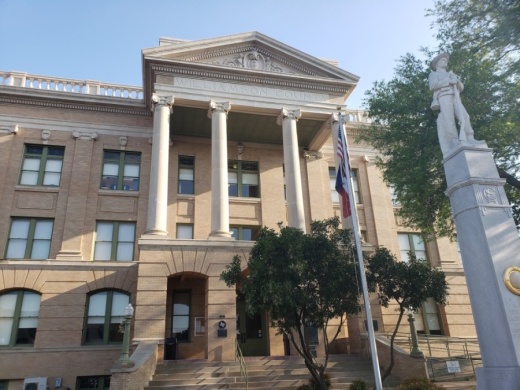Williamson County Commissioner Russ Boles informed the court during a Dec. 8 meeting that while he still intends to convene a committee that will look into the possible removal of the Confederate statue in front of the courthouse in Georgetown, he would like to postpone it to early next year.
Boles said, as his and other court members' duties are stacked with end-of-year obligations, he plans to now put the committee on the agenda in the second half of January. For it, each of the court's five members will nominate three individuals to serve on the committee.
The formation of the committee does not mean the statue will be removed. Instead, the committee will be tasked with looking into the statue history and potential options for relocation if the court chooses.
Backlash surrounding the presence of the Confederate statue, which sits on the south entrance of the courthouse on the Georgetown Square, returned over the summer as protests erupted across the country in opposition to police brutality against Black people and people of color. Those who request its relocation say the statue no longer represents the views of the county residents. Those who wish it to stay say its removal will undermine history.
Original post
After much discussion during an Aug. 11 meeting, four of the five members of the Williamson County Commissioners Court voted to establish a 15-member committee that will look into the possible removal of the Confederate statue in front of the county courthouse in Georgetown.
While the initial motion made by Precinct 4 Commissioner Russ Boles was to name the members of the committee in September, ultimately the court voted to postpone the creation and naming of the members of the committee to December with a possible recommendation by that committee to be given to the court at the end of March.
“My intent is not to discuss if the statue is appropriate—the statue is appropriate; its’ part of our history, and that is not changing,” Boles said. “What I would like committee to look at is if the courthouse is the appropriate location for the statue.”
The statue—which is of no one in particular—sits on the south side of the courthouse and was installed in 1916 by United Daughters of the Confederacy. Over the summer, its location has brought controversy with those in favor of its relocation saying it is a symbol of hate and racism and memorializes the Lost Cause, which posits the loss of the Confederacy as a tragedy.
The recent call for its relocation was spurred by the death of George Floyd, a Black Minneapolis man who died while in police custody in May, as well as the death of Williamson County local Javier Ambler in 2019, which highlights institutionalized racism within the country.
Instead, they believe it should be moved to Odd Fellows Cemetery in Georgetown where over 100 Confederate soldiers are buried.
Those who wish to keep the statue where it is currently located believe its removal or relocation is an erasure of history.
The commissioners will each select three people to be on the committee. Court members said they are looking for individuals who understand the history and can be level-headed in discussing a complex issue.
“We know what [the citizens of] 1916 thought. I want to know what the citizens of 2020 think,” Boles said.
During the meeting, eight individuals spoke on the topic during public comment. Of those, five were in favor of the committee, and three were opposed.
The establishment of the committee does not mean the statue will be relocated. Instead, it is a search for the appropriateness of its location with historical reason and purpose, commissioners said.





